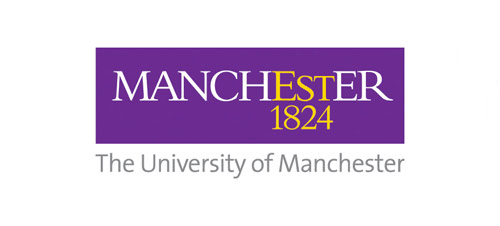William Basnett Eyewitness Account
- Place: Oldham
- Role: Spectator
- Occupation: Medical Practitioner
Testified in the Lees Inquest. Basnett was the Medical practitioner who examined Lees’ body concluding the death was due to cuts & trauma from a blunt instrument. He also witnessed the violence in St. Peter’s field.
Account
Download accountMr. WILLIAM BASNETT called, sworn, and examined by the CORONER.
Q. Did you ever see John Lees?
A. Yes.
Q. When?
A. The day after his death.
Q. Did you ever see him whilst living?
A. No, Sir.
Q. At whose request did you go to see the body?
A. I was solicited to do so by Mr. Harmer.
Q. What was the state of the body when you saw it?
A. It was in a high state of putrefaction.
Q. Did you see any wounds about it?
A. Yes; there was a cut on his right elbow, about two inches long and an inch and a half deep.
Q. What was the appearance of this wound?
A. It was livid; and the mark extended to the shoulder. The bone was separated; when I bent the elbow the bone was pro¬truded; the bone was cut partly in two.
Q. Did the place bleed or discharge?
A. I did not perceive that it bled; nor was there any running. If I had examined the wound when he was alive, I have no doubt it would have opened in the same way.
Q. Did the wound appear to be healing?
A. I can't say; because the appearances after death are so different.
Q. On what part of the elbow was the wound?
A. Just above the joint.
Q. Have you been in the room during the examination of the other witnesses?
A. I have.
Q. Were there any other wounds on the body?
A. There appeared to have been a cut or stab on the left shoulder; the part was black, and appeared to have been nearly healed up.
Q. What was the length of this cut?
A. About two inches long, as I judged by the scar.
Q. Do you think this could have occasioned any serious in¬Jury?
A. It did not appear to me that it could.
Q. Was any part of his body discoloured?
A. Yes; his shoulder, back, and loins, were very much disco¬loured; they appeared to be bruises from external violence.
Q. Was there any other mark or cut that you saw?
A. There was not.
Q. If you had not heard of any accident before his death, what should you think had produced this discolouration?
A. I should have thought it was produced by violence, inflicted with some blunt instrument.
Q. Do you mean to be understood to swear, that the mortification took place in consequence of the bruises and cuts?
A. I have no hesitation in saying that is my opinion.
Q. Could you tell as well by outward inspection as if you had opened the body, what was the cause of his death?
A. I could certainly have told better if I had opened it.
Q. If the mortification proceeded from the bruises, must he not have been in excruciating pain for some days previous to his death?
A. Undoubtedly.
Q. And would not gangrene have appeared round the other wounds?
A. I saw none except round the cut: the back and loins were more putrefied than any other part of the body.
Q. Did you examine the foot?
A. No: I did not examine the foot.
Q. Could you have traced the same mortification on the day he died as you did afterwards?
A. Perhaps not. In some cases, if it had been very rapid be¬fore he died, it might have appeared, and particularly round about the abdomen.
CORONER—(to the Jury)—Have any of you any question to ask?
A JUROR—Do you believe he died in consequence of his wounds and bruises?
A. I believe the wounds and bruises caused the mortification. I only speak from general appearances.
Examination of the Witness resumed by the CORONER.
The CORONER—Might not those appearances have arisen from some other cause than external injuries?
A. I do not think they could.
The CORONER—(to Mr. Harmer)—Mr. Harmer, do you wish to put any question to the witness?
Mr. HARMER—If you please, Sir.
The Witness examined by Mr. HARMER.
Q. A witness has said that one of the wounds bled after the death of the deceased. Can you account for that circumstance?
A. I have known it frequently happen when the fluids were in a state of putrefaction.
Q. Would the loss of eye-sight, and of the use of the limbs, be a necessary consequence of an injury to the spine?
A. They would.
Q. Are coldness, sickness, loss of appetite, and dejection of spirits, also consequences which usually follow a similar injury?
A. They are.
Q. If the wounds and injuries were inflicted three weeks before; the death, must they have been very considerable to have left those appearances which you saw on the body?
A. Yes, they must.
Q. Did the general appearances which the body exhibited, lead you to form an opinion of the cause of his death without further research?
A. Yes.
Q. In the first place, did you believe the appearances you have described were caused by violence and external injuries?
A. Yes.
Q. You have told us you did not open the body?
A. No.
Q. Then I will ask you, whether or not the appearances were quite sufficient to enable you to form a judgment of the cause of his death, without opening the body?
A. Yes.
Q. Have the goodness to tell us now, Sir, what you think was the cause of his death?
A. Cutting and maiming.
Mr. HARMER—(to the Coroner)—I have no more questions to ask, Sir?
Re-examined by the CORONER.
Q. If his spine had been injured on the 16th, could he have walked about?
A. Yes, he might a little, for a few days after; but if a very great inJury had been done to the spine he could not have walked.
Q. Did you ever know a person to become convalescent after an inJury to the spine?
A. After a slight inJury a person may not at first discover it, but a paralysis of the limbs often follows.
Q. If the spine was injured on. the 16th, would he have had more pain at first than a fortnight afterwards?
A. I should think not.
The CORONER—(to Mr. Harmer)—Is there any other medical man you wish to examine?
Mr. HARMER—(to the Coroner)—No, Sir.
Recalled 27 September.
Mr. Harmer (addressing the Coroner)—
On Saturday, when Mr. Basnett was examined, I was not aware that he had been in Saint Peter's-field when the meeting took place; but having since learnt that he was at the window of a house in Windmill-street, in a situation to see the proceedings of that day, I have requested his attendance to state what passed under his observation; and as he is extremely unwell, and anxious to return home immediately, I shall feel obliged if you will now take his further evidence.
The Coroner—(to Mr. Harmer)—Very well, let him be called.
Mr. BASNETT called in, sworn, and re-examined by the CORONER.
Q. Have you been in Court this day?
A. Not until this moment.
Q. Were you at the meeting on the 16th of August?
A. I was.
Q. Did you see Mr. Hunt arrive?
A. Yes; he came in an open carriage, about one o'clock; and after he had spoken for about five or ten minutes, I saw the Cavalry approach.
Q. What Cavalry?
A. The Manchester Yeomanry.
Q. Did you see them draw up opposite Mr. Buxton's?
A. Yes; and I saw them advance and proceed towards the hust¬ings.
Q. What happened there?
A. Great confusion took place, and when they surrounded the hustings I heard cries of “Murder!" and “Save us, save us!"
Q. Did you see any person hurt?
A. Yes; I saw several fall opposite to the house where I was, in Windmill-street.
Q. Whose house was that in which you were?
A. I think the occupier's name is Croft.
Q. How far from you, did the persons fall?
A. About two hundred yards.
Q. What more did you see?
A. Nothing; for I was so shocked, that I retired into a back¬room, and desired the women who were with me to do the same, being fearful that their screams might bring persons to the door.
Q. How long did you remain there?
A. Probably an hour; and when I thought I could retire with safety, I left the house and went home.
Q. What time was that?
A. About a quarter past two.
Q. How is the house, where you were, situated, with respect to St. Peter’s-field?
A. It fronts it.
Q. What caused the persons to fall, to whom you have alluded?
A. I saw a soldier cutting at a woman in the centre of the field, and she fell.
Q. What soldier was he?
A. A Manchester Yeoman.
Q. How do you know that he was a Manchester Yeoman?
A. By his dress.
Q. Were there many people betwixt you and the Yeoman?
A. Yes.
Q. Where were you when Mr. Hunt arrived?
A. I was in the house, and did not go out the whole time.
Q. Did you see any special constables on the ground?
A. Yes.
Q. What number were there?
A. I can't tell; but there were a great many.
Q. Did you see them strike any body?
A. Yes; I saw them striking several blows.
Q. Why did they do this? was it to disperse the people?
A. Yes; they were dispersing them with blows.
The Witness examined by Mr. HARMER.
Q. How long were you at the window before the arrival of Mr Hunt?
A. Probably twenty minutes.
Q. Were the people peaceable and good humoured during that time?
A. Yes, they were.
Q. Before the Cavalry charged, was there any disturbance or riot?
A. Not the least. The people appeared perfectly peaceable and quiet until then.
Q. Was the first and only disorder, then, occasioned by the approach of the military?
A. Yes, certainly.
Q. Was any attack made, or even insult offered to the military?
A. None.
Q. Did you hear the Riot Act read?
A. No; I did not.
Q. Did any thing pass under your own observation or other¬wise, to induce you to believe that the Riot Act had been read?
A. Nothing.
Q. Was any attempt made to disperse the meeting previous to the incursion of the military?
A. None, that I saw or heard.
Q. If any stones had been thrown, or sticks used, by the multitude, must you not have see it?
A. Yes, I must.
Q. Then, did you see any stones thrown at the Cavalry?
A. No; I did not.
Q. Were any sticks used against them?
A. None whatever.
[The Witness withdrew.]














